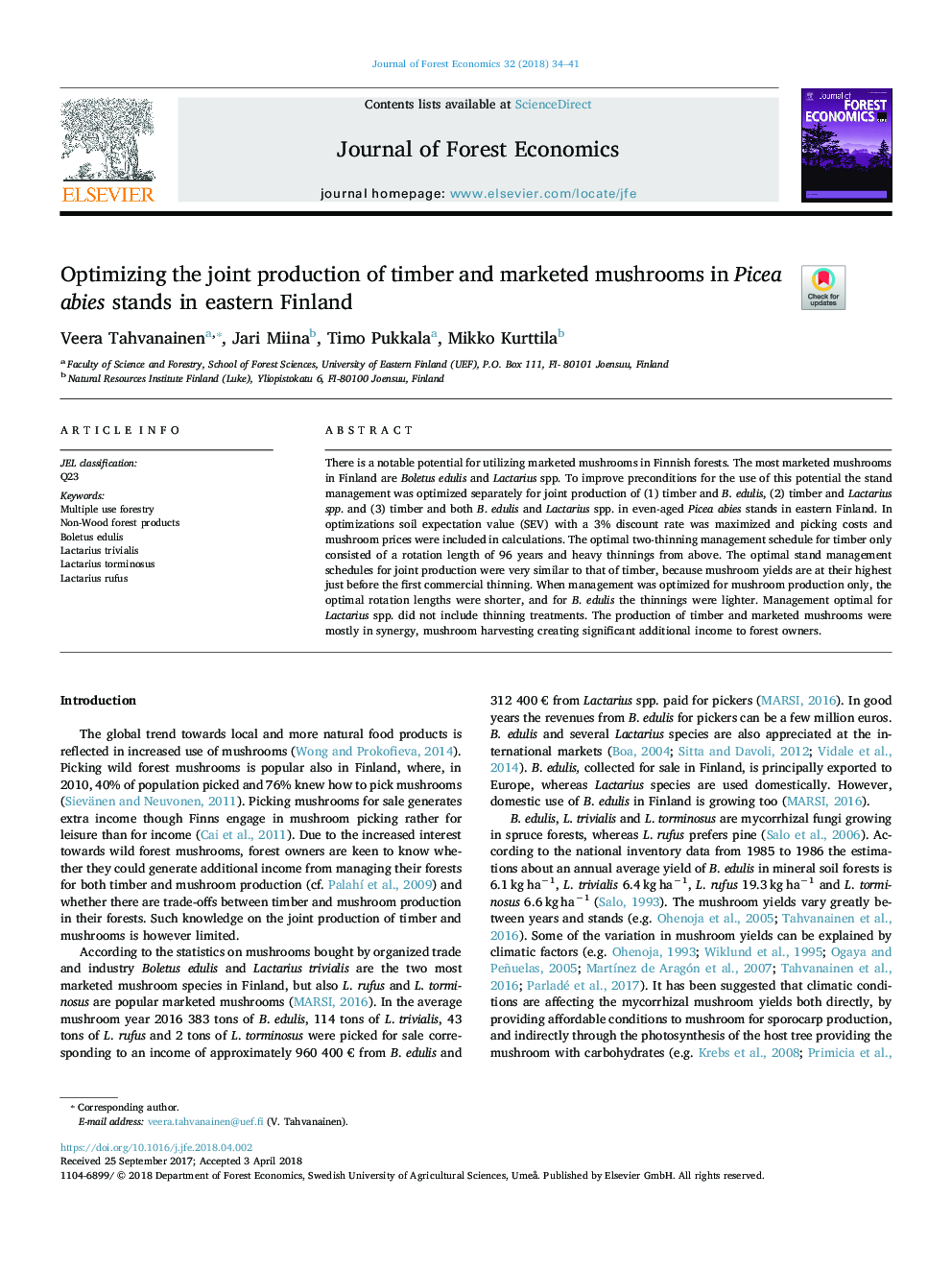| Article ID | Journal | Published Year | Pages | File Type |
|---|---|---|---|---|
| 6545110 | Journal of Forest Economics | 2018 | 8 Pages |
Abstract
There is a notable potential for utilizing marketed mushrooms in Finnish forests. The most marketed mushrooms in Finland are Boletus edulis and Lactarius spp. To improve preconditions for the use of this potential the stand management was optimized separately for joint production of (1) timber and B. edulis, (2) timber and Lactarius spp. and (3) timber and both B. edulis and Lactarius spp. in even-aged Picea abies stands in eastern Finland. In optimizations soil expectation value (SEV) with a 3% discount rate was maximized and picking costs and mushroom prices were included in calculations. The optimal two-thinning management schedule for timber only consisted of a rotation length of 96 years and heavy thinnings from above. The optimal stand management schedules for joint production were very similar to that of timber, because mushroom yields are at their highest just before the first commercial thinning. When management was optimized for mushroom production only, the optimal rotation lengths were shorter, and for B. edulis the thinnings were lighter. Management optimal for Lactarius spp. did not include thinning treatments. The production of timber and marketed mushrooms were mostly in synergy, mushroom harvesting creating significant additional income to forest owners.
Related Topics
Life Sciences
Agricultural and Biological Sciences
Agronomy and Crop Science
Authors
Veera Tahvanainen, Jari Miina, Timo Pukkala, Mikko Kurttila,
